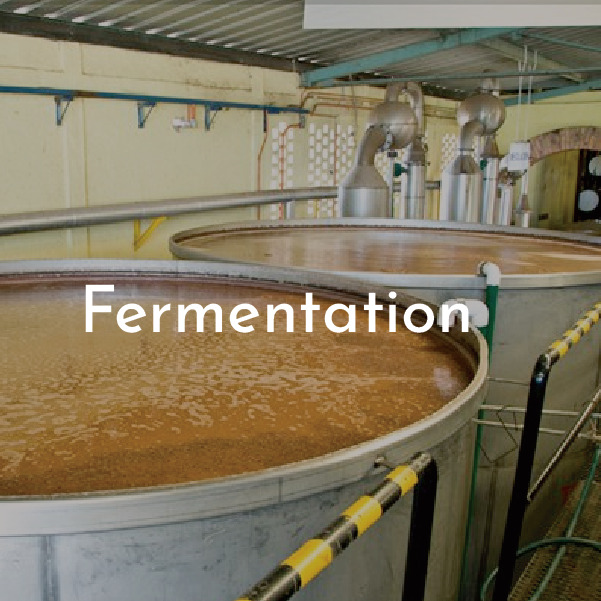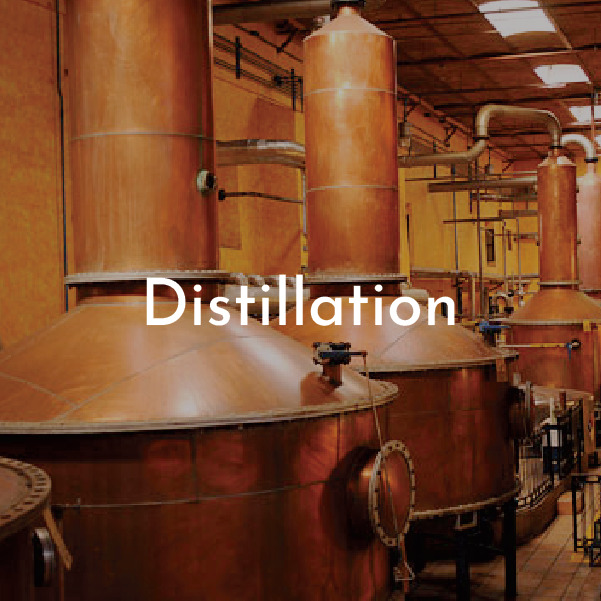About / Tequila
The Process
“Jima” harvest
Once the Agave plants are considered mature enough, the harvest process begins, traditionally known as “jima”. This process consists in bluntly cutting the leaves from the agave, to later extract the agave head from the earth, also known as the pineapple (piña).
Tequila categories
Tequila 100% agave
Means tequila that has been produced from only the fermented and distilled juices of the “Blue” Agave Tequilana Weber
Tequila
Made with a mix of sugars, where at least 51% of these sugars must come from Blue Agave Tequilana Weber, and the remaining 49% is made of sugars from other sources
The Agave

According to the Tequila Standard, only Tequilana Weber blue variety Agave may be used for the production of Tequila.
These Agaves must be planted within the territory protected by the Appellation of Origin, as well as being included in a registry of plantation controlled by the Tequila Regulatory Council.
Many different types of agave exist. In Mexico alone more than 200 hundred varieties have been identified. However, none is as suitable for the production of Tequila as the plant that was classified in 1905 by the German botanist Franz Weber, from whom this variety took its name.

The Agave is planted in parcels in forming neat rows leaving sufficient space between them to facilitate the care of the plant.
Normally, the Agaves reproduce through shoots that grow out of the mother plant from the fourth year onwards and are separated and later transplanted onto other fields already prepared for their cultivation. Nonetheless, the Agave may also grow from a single seed, although this technique is not very common nowadays.
The Agave requires from 6 to 10 years to reach its maximum sugar concentration. During its period of growth, the plants are subject to pruning or trimming of the tips of the leaves to favour the growth of the head.
All of the care and cultivation of the Agave is done manually following traditional methods that have been passed down from generation to generation.
For the production of Tequila, only the head (piña) is used. It can weigh between 40 and 60 kilograms once it is ready for harvest.
Tequila Production
Cooking
The cooking converts the complex carbohydrates of the agave heads into simple sugars, suitable for fermentation and also softens the heads to make the process of sugar extraction easier The most traditional cooking takes place in brick or stone ovens in a process that lasts from 50 to 72 hours involving steam injection. This process can also take place in steel tanks of several ton capacity, known as “autoclaves”.
The higher sealed capability of these tanks allows the required time for this process to be reduced to 14 or even 8 hours After the juices have been extracted, known as fresh must (mosto fresco), these may be used to produce either Tequila or Tequila 100% Agave. The difference being that, in the case of Tequila, after the fermentation these juices are mixed with sugars obtained from sources other than the Agave Tequilana Weber blue variety, if and when they maintain a ratio of 51% Agave sugars minimum and the remaining 49% from other sources
Extraction
After the juices have been extracted, known as fresh must (mosto fresco), these may be used to produce either Tequila or Tequila 100% Agave
The difference being that, in the case of Tequila, after the fermentation these juices are mixed with sugars obtained from sources other than the Agave Tequilana Weber blue variety, if and when they maintain a ratio of 51% Agave sugars minimum and the remaining 49% from other sources
Fermentation
The yeast that each producer decides to use initiates the fermentation processes converting the fresh must (mosto fresco) into dead must (mosto muerto), meaning the transformation of sugars into alcohol
The fermentation lasts many hours and differs among factories due to the standards that each one has established.
Once the normal fermentation process has concluded and the must has reached an alcoholic content of 5 to 7%, it can be left to settle a few hours before moving onto the distillation stage
Distillation
The distillation takes place in copper or stainless steel pot stills or in continuous distillation towers
Tequila is distilled twice. The first distillation is known as smashing (destrozamiento), it takes a couple of hours and it yields the “ordinario”, meaning a liquid with an alcohol level of around 20%
The second distillation, also known as “rectificación”, takes between 3 to 4 hours. The result of this process is a liquid with an alcohol level near 55%
During the distillation processes, the substances are divided into 3 parts. The heads (cabezas), that contain unwanted aldehydes, are disposed of. The heart (corazon) is used for the Tequila, while the tails (colas) are sometimes recycled in the following distillation and other times are simply discarded
After the second distillation, a transparent liquid is obtained that can already be considered as silver Tequila or it can be aged to become another type of Tequila
Aging
Barrels or casks are used for aged Tequilas. Extra-aged Tequilas and Ultra-aged Tequilas necessarily have to use barrels with a maximum capacity of 600 liters. All barrels must be made of white oak which can be American or French
The barrels may be new or may have previously been used for other spirits. Also, they may have been subject to a toasting or burning treatment that will ultimately transmit different characteristics to the Tequila
Tequila Tasting
*Source, The National Chamber of the Tequila Industry
Responsible consumption
Moderation is a sign of maturity
Tequilafest reminds you that responsible consumption of Tequila will turn out in your own benefit, in that of your loved ones and in the benefit of society in general.
When consuming alcoholic beverages, avoid activities that can imply risk, such as driving or handling certain ty pes of machinery and / or equipment
Do not let alcohol control you
Tequila is a drink to be enjoyed, not a means of losing your head
Always drink responsibly








